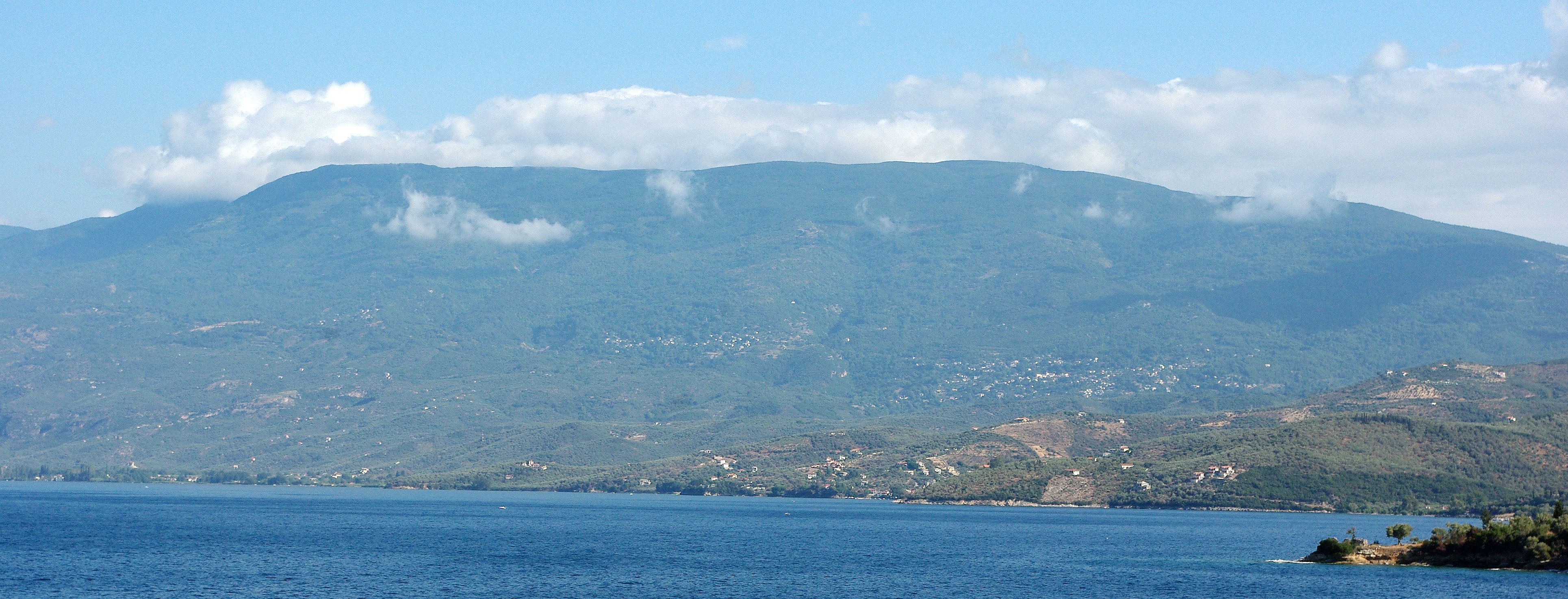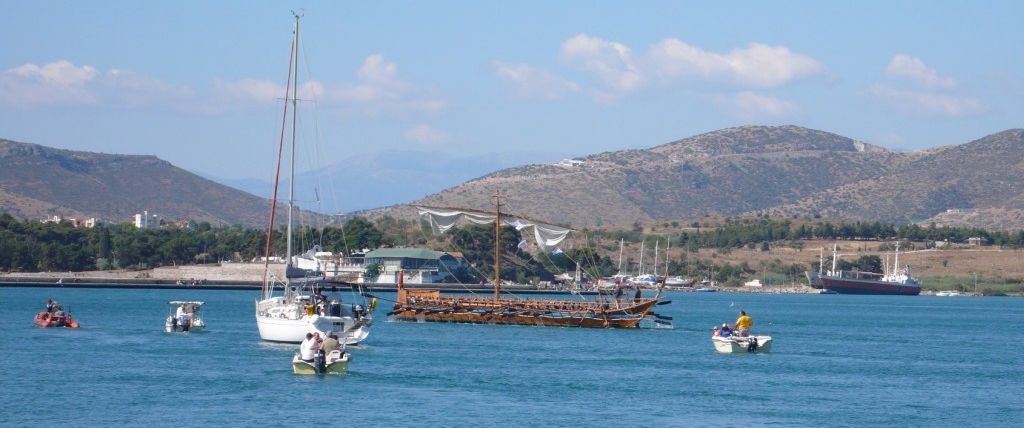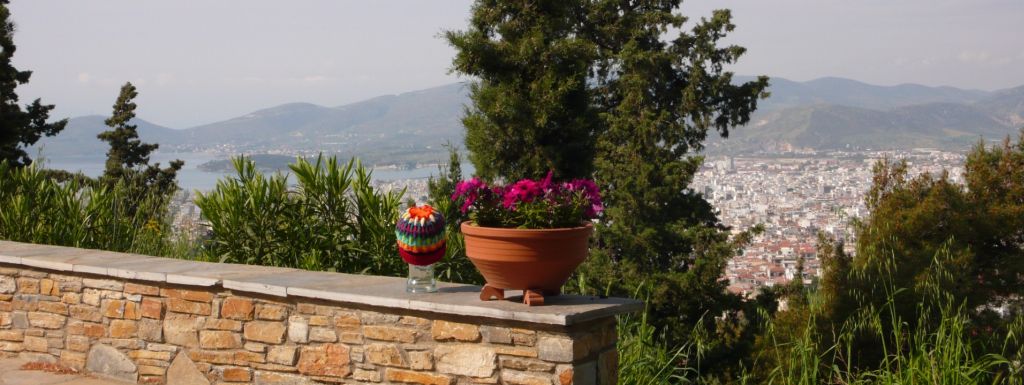I have mentioned before that various Greek gods of mythology were said to be responsible for bad weather, and last night they outdid themselves. An almighty storm blew up out of nowhere as we were reading ourselves to sleep. It raced across the Pagasitic from Volos where torrential rain caused such flooding that news reports likened the streets of Volos to the canals of Venice, and had us scrambling out of bed, scattering indignant cats in our wake, as we rushed to secure the shutters. And did it rain! The water slammed against the shutters and the windows and thundered down on the roof, battering the garden as though driven by some fury of envy at the early autumn loveliness. The gods were certainly enraged. All of them were in on the act, but whose tantrum started it? Zeus flung his thunderbolts about in a frenzy, fuming at Aeolus to release the storm winds. Poseidon, not one to be outdone, shot up from the depths to make his menacing entrance. Talk about a tempest!
The rampage was shortlived, no damage, but a quick inspection this morning revealed that the Sternbergia had suffered. The delicate yellow flowers which are such a delight as winter approaches, were no match for the arrogant actors in this latest drama. ![P1230286 [HDTV (1080)] [1024x768]](http://chasingcentaurs.com/wp-content/uploads/2014/10/P1230286-HDTV-1080-1024x768.jpg)
![P1230289 [HDTV (1080)] [1024x768]](http://chasingcentaurs.com/wp-content/uploads/2014/10/P1230289-HDTV-1080-1024x768.jpg)
![P1230295 [HDTV (1080)] [1024x768]](http://chasingcentaurs.com/wp-content/uploads/2014/10/P1230295-HDTV-1080-1024x768.jpg)
![P1230299 [HDTV (1080)] [1024x768]](http://chasingcentaurs.com/wp-content/uploads/2014/10/P1230299-HDTV-1080-1024x768.jpg)




